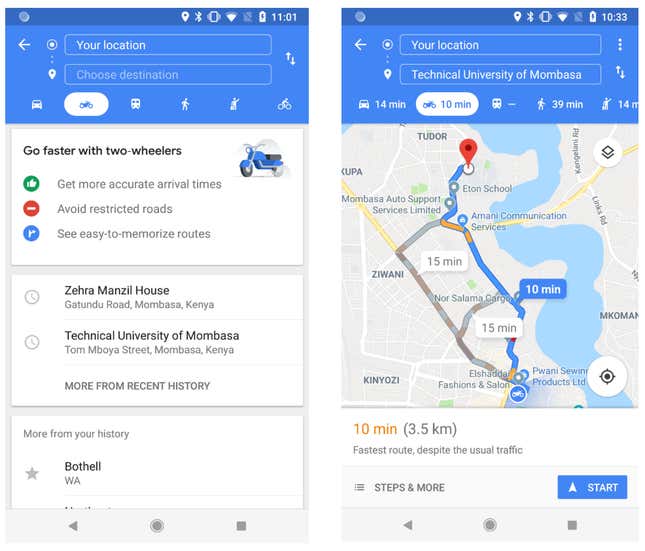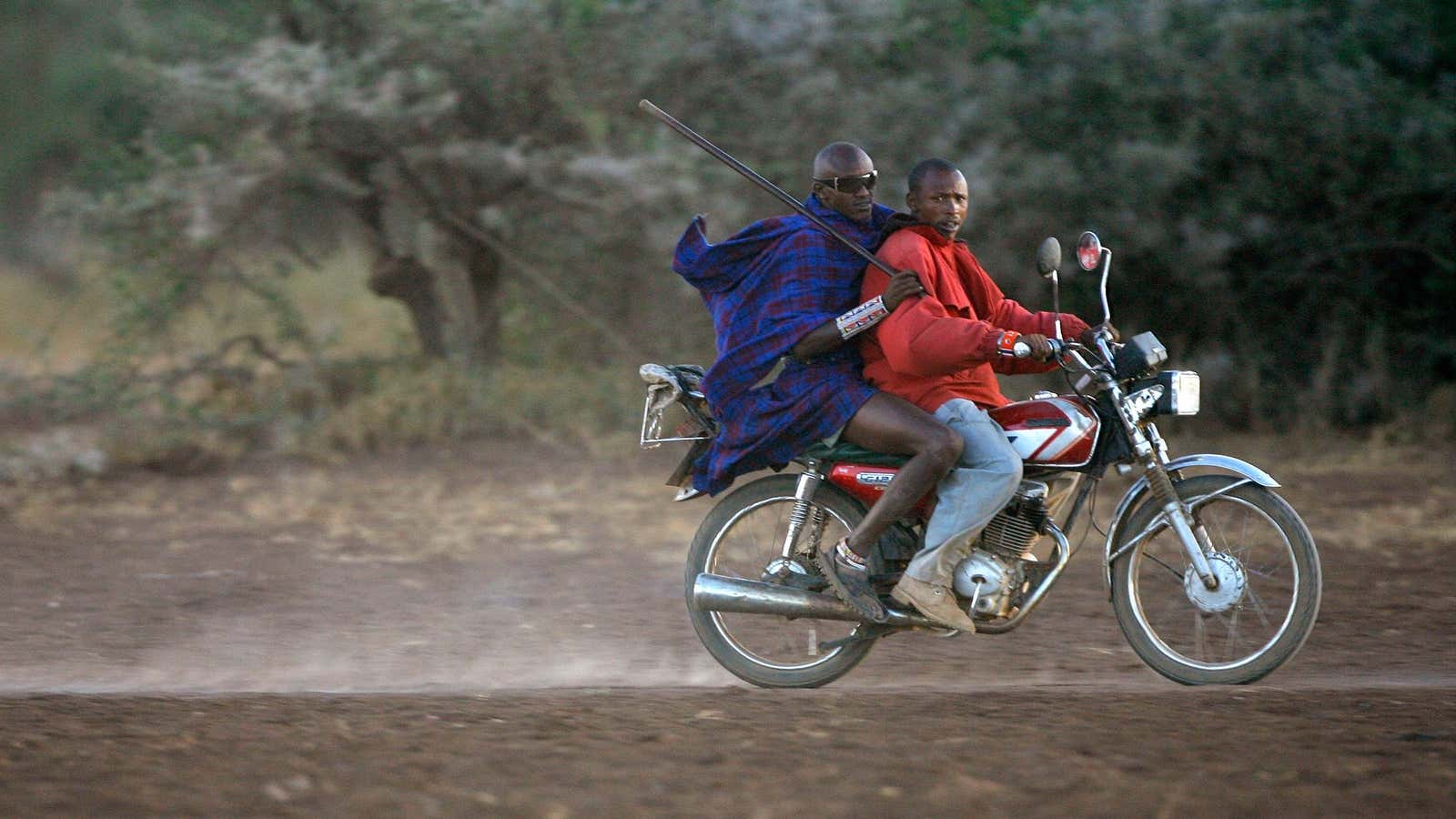Google wants to help Africa’s motorcycles taxis navigate roads better.
The company launched the motorcycle mode feature on Google Maps today (Oct. 15) in Kenya, a first in Africa. The new routing mode offers turn-by-turn navigation, avoids restricted roads, suggests routes and shortcuts that are more efficient, and shows accurate arrival times.
The feature was first introduced in India last year and is currently available in other Asian countries such as Vietnam and Thailand, where motorcycle use is very widespread. Google also announced it would launch the Street View service in Kenya, allowing locals and tourists to explore up to 9,500 kilometers (5,900 miles) of roads including in coastal cities like Mombasa.

Getting around African cities like Nairobi can be demanding given the poor infrastructure, insufficient street addresses, the absence of reliable public transportation, and increasing urbanization that is fueling congestion. As such, motorcycle taxis, locally known as boda bodas, have grown over the last few years: Google said over a million Kenyans using motorbikes as their preferred mode of transport. The influx of cheap motorcycles from Indian manufacturers and the availability of easy financing and maintenance solutions have also led to the growth of the two-wheeler market across Africa.
The swell in motorcycle growth has also been noticed by ride-hailing services like Uber and Taxify, who have customized their products to allow riders to hail a boda boda in Nairobi or even a three-wheeled tuk-tuk in Mombasa. Besides being fast, these rides are usually cheaper options than car taxis, making them attractive to customers.
For Google, the introduction of the motorcycle mode shows the tech giant’s efforts to extend its reach across Africa as it competes with companies including Facebook and Alibaba, who are all scouting for investment opportunities to deepen their operations and provide support to more entrepreneurs. In April, the company announced the launch of Google Go in Africa, an app aimed at bypassing slow and expensive internet speeds. It also introduced YouTube Go in Nigeria and South Africa, an “offline first” version of the video streaming platform, allowing users to preview and download videos, rather than stream, and essentially save on data costs.
